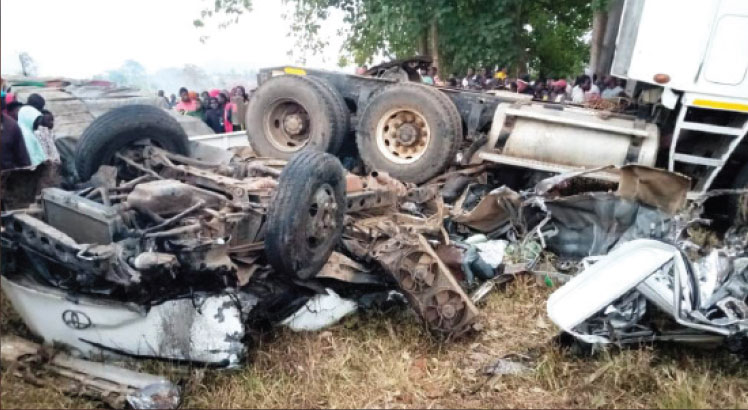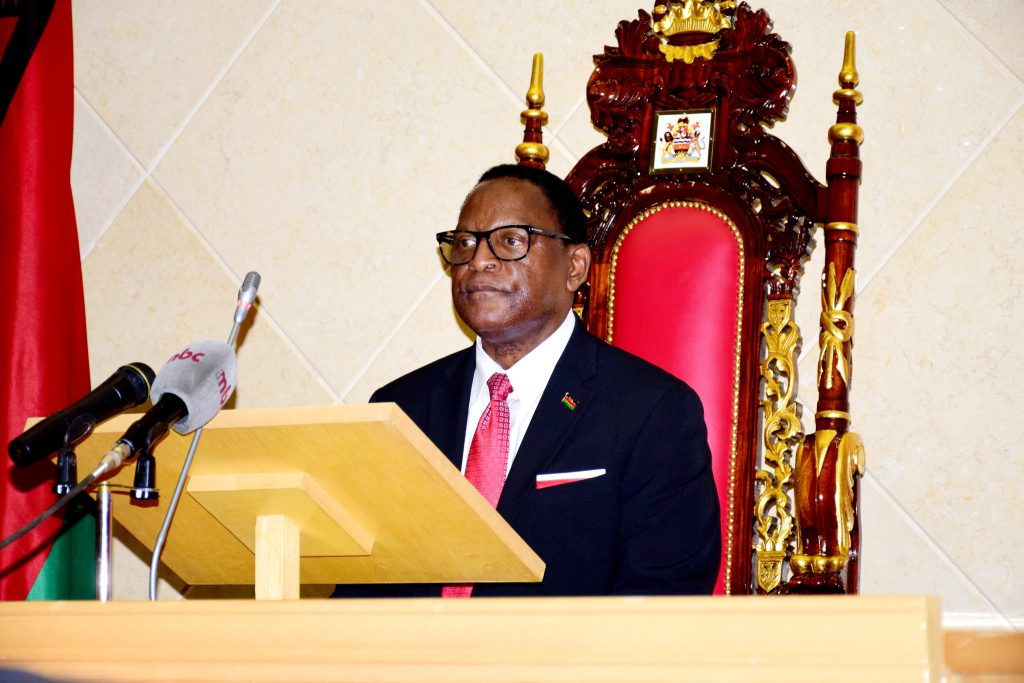Despite a high burden of road accidents, only six percent of cases on M1 use ambulances to reach hospitals while a third of cases use private or commercial vehicles.
This is among key findings from the pilot phase of the Emergency Medical Services (EMS) project being implemented by the Ministry of Health with its partners on the Blantyre-Lilongwe M1 stretch.
A road traffic crash captured along the M1
This World Bank supported project seeks to provide emergency services to road traffic crash cases on the M1.
While the EMS concept does not specify the monetary investment, the project comes against the background of deaths emanating from road traffic crash cases due to lack of instant medical help.
Epidemiologists and health rights activists have called for comprehensive investment, especially in equipment such as ambulances and implementation of deliberate policies in the health sector.
Findings of the pilot phase, presented in a World Bank Trauma and Emergency Medical Services in Malawi Report, show that 29 percent of road traffic crash trauma cases arrive at hospitals using private vehicles while 21 percent use commercial vehicles such as taxis.
On the other hand, 16 percent of road traffic crash trauma cases use public modes of transport such as minibuses.
This means that in Malawi ambulances are used more often for referral across health facilities than for emergency transport from trauma sites.
“Another concerning finding, which related directly to the work with the EMS pilot, is the major delays observed in time to reach hospitals and treatment which can be analysed using the three delays framework.
“These are delays in the decision to seek care, delay from injury to hospital, and delay from arrival to be seen,” reads part of the findings.
But while the EMS remains ongoing, the impact evaluation has not been completed since it will require the pilot phase to be fully implemented to evaluate the impact.
As such, the findings presented in the World Bank report highlights lessons learned from the EMS pilot phase implementation whose live trial began in May 2019.
It is anticipated that such highlights can provide valuable information to improve understanding of trauma and road traffic injuries in Malawi as well as the practicalities around rigorous data collection and setting up of an EMS system.
Health and Rights Education Programme executive director Maziko Matemba in an interview on Wednesday described the findings as an eye opener that must compel authorities to provide proper policy direction in addressing highlighted gaps.
Matemba said it is recommended that RTC trauma cases be attended to by well-trained and skilful medical personnel en route to respective hospitals.
He said: “So, this report should be a wake-up call. But also as an activist, I think this is an area where as a country we need to invest in. Investments should be prioritised in areas affecting the population.”
Matemba’s recommendation is similar to that of the findings which state that there is need for comprehensive investment and implementation of policies to alleviate resource needs.
And according to the activist, the use of any other modes of transport to transport road traffic crash trauma cases apart from ambulances puts patients at risk of losing their lives since they do not receive the care that is needed.
The initial implementation of the EMS pilot phase, with oversight of the Project Steering Committee, started after the EMS Pilot Project Development Plan was finalised by the Ministry of Health in 2016 and in May 2019 a live trial began.
Kamuzu University of Health Sciences professor of epidemiology Adamson Muula said in an email response on Thursday that more could be done to address gaps as noted in the findings.
He said: “The M1, however, is over 1 000 kilometres. This presents its own challenges as to the extent at which the whole stretch could be capacitated to be responsive to all eventualities.
“Perhaps, one could still say the good thing is that road traffic crashes do not equally happen along the whole stretch. There are hotspots which then become the focus for the concentration of resources.”
Muula pointed out that although some communities along the M1 have been trained and provided with mobile phones to call an ambulance, it is unlikely that bystanders and the injured would be waiting at a crash site for an ambulance.
The epidemiologist further said the country needs to think about the unfair comparison between high-income countries and low-income countries such as Malawi in addressing such an issue.
“In London, all bystanders and everyone will have called an ambulance and no one really would transport a person injured on the road to the hospital. Here in Malawi, whoever arrives first feels the compassion to do something,” said Muula.
According to the World Bank, Malawi is among countries in Africa with high numbers of annual road traffic crashes and a weak emergency response system, including pre-hospital care.
This was, therefore, one of the reasons government developed the EMS to decrease victims of road traffic crashes.
The pilot phase is being funded by the World Bank through the Southern Africa Trade and Transport Facilitation. It is being implemented in two central and four district hospitals.
The phase includes the provision of 12 ambulances, a central dispatch centre, and capacity building of medical personnel in trauma care as well as a registry to collect data on trauma cases, care and outcomes.
The post Only 6% of trauma cases use ambulance first appeared on The Nation Online.
The post Only 6% of trauma cases use ambulance appeared first on The Nation Online.
 Moni Malawi
Moni Malawi 

